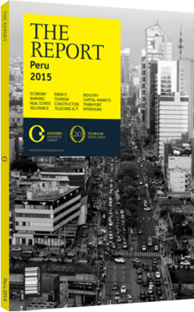Jesús Blanco, CEO, InGroup: Interview

Interview: Jesús Blanco
Is developing secondary cities the key to reducing the 1.8m national housing deficit?
JESÚS BLANCO: There is already construction being carried out in northern cities, such as Trujillo or Piura, and in Ica and Arequipa in the south, as they offer a faster growth rate than in Lima. The key lies in creating a specific model for each town, and make housing attractive to a population with different expectations and needs than those in Lima. Of the housing deficit, close to 1m is located in the lower tiers of the economy. To have successful projects for these segments, the key is the price of land. This means the only locations available are on the outskirts of Lima or secondary cities. For these projects to be viable, the government needs to guarantee access to basic services such as water, electricity and road infrastructure, and this is not currently the case, either in the capital or in provincial cities.
The secondary issue is credit penetration. Although the government finances 40% of houses for low-income buyers through the Techo Propio programme, families have no access to credit for the remaining 60%. These factors lead to widespread self-construction, which is less safe, more expensive and takes longer to finish. For this to change, there has to be a combined effort from the banks, the government and the real estate companies to promote educational campaigns that show the benefits of going through the formal sector.
As Peru is susceptible to natural disasters, what innovative construction techniques are needed?
BLANCO: In the formal sector, the current regulations are sufficient to ensure that construction standards are able to cope with natural disasters. Therefore there are no unexpected costs applied to the final price. The problem lies in the informal sector. The lack of safety measures and proper foundations mean that in the event of an earthquake large parts of Peruvian cities would be destroyed, as happened in Pisco in 2007. The government needs to take a more prominent role in enforcing preventive measures to ensure that natural disasters do not have such an impact. Infrastructure also needs to be upgraded, especially in the northern cities, to help minimise the impact of El Niño.
What can be done to expedite construction permits and overcome bureaucratic delays?
BLANCO: The root cause of bureaucracy problems is the excessive number of laws that leave too much room for interpretation. The real estate surge of the past 10 years has not been accompanied by an increase in the capacity of the municipalities. Decentralisation gave too much power to local governments that have neither the experience nor the knowledge to handle the responsibility. Municipalities need to focus on training staff and acquiring more manpower to expedite the granting of construction licences. The second issue is with public employees being legally liable for things that occur during their term of employment. Many are unwilling to take actions that may have repercussions.
These two factors cause delays of up to a year that could be solved by centralising and standardising procedures.
What are your thoughts on vacant office space, which in Lima stands below 10%?
BLANCO: Though the current 460,000 sq metres of office space in Lima are indeed largely occupied, ongoing projects will double this capacity. The additional 400,000 sq metres will lower the occupation rate to around 90%, which is a more healthy and sustainable market. This surge is still focused on the same districts of Miraflores, San Isidro and Surco, with no new areas being promoted. The trend has shifted and international companies are no longer seeking to buy office space, preferring to rent it. This will have a direct impact on many small real estate companies that based their projects on pre-sales. Lacking financing backing, they will be forced to lower prices and, in the end, disappear. Unless there is a sudden rush of multinational companies arriving in the country, grade-A and -B office space in Lima is sufficient in the short and medium term.
You have reached the limit of premium articles you can view for free.
Choose from the options below to purchase print or digital editions of our Reports. You can also purchase a website subscription giving you unlimited access to all of our Reports online for 12 months.
If you have already purchased this Report or have a website subscription, please login to continue.

